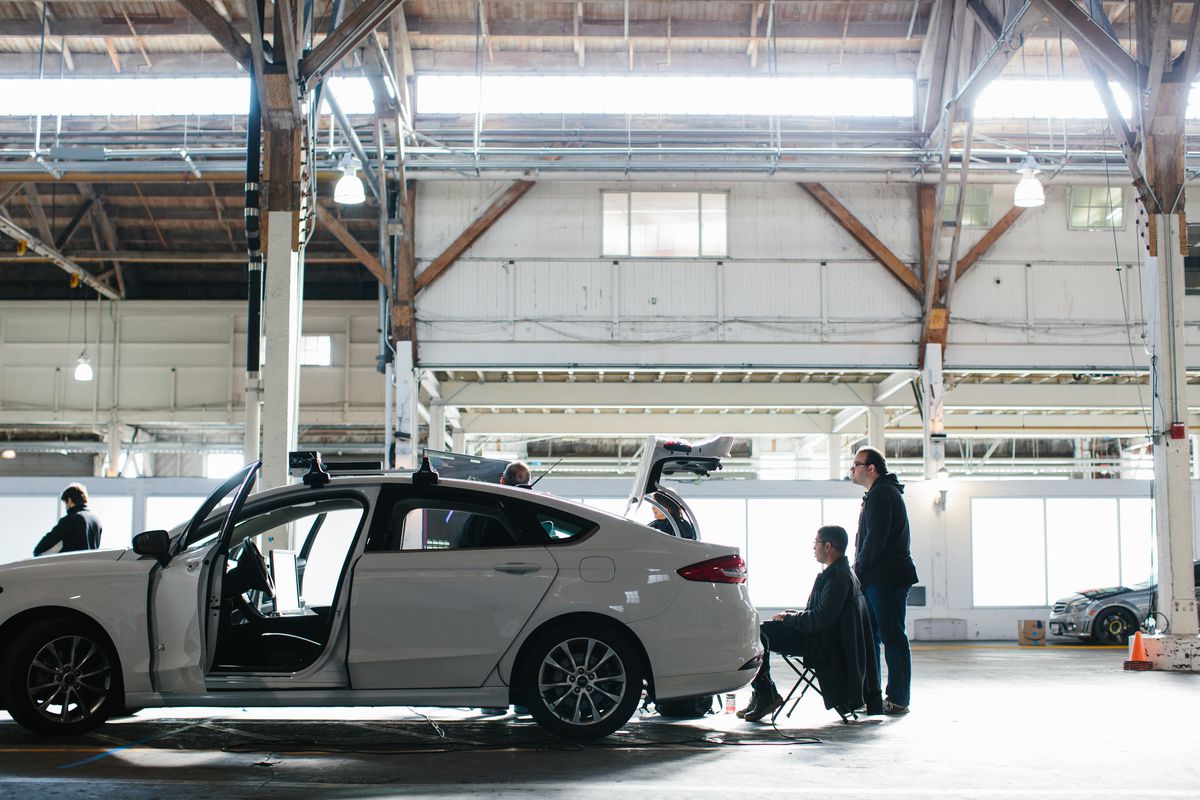Self-driving cars won’t change society if the sensors that allow them to “see” their environment remain too expensive to produce at scale. Until recently, the only company that made reliable LIDAR, the laser sensor that sends millions of laser points out per second and measures how long they take to bounce back, was Velodyne. But that’s changing. Waymo, the self-driving unit of Alphabet, makes its own proprietary LIDAR. Cruise, the autonomous driving division of GM, recently acquired a startup called Strobe. And the latest challenger, Luminar, has been slashing costs and scaling rapidly as it seeks to make its mark on this fast-growing industry.
Today, the Silicon Valley-based company made a bunch of announcements with the intention of solidifying its “major player” status. It’s unveiling its newest LIDAR unit, with a 120-degree field of view — which is enough to see what’s ahead of the car, but you’d need a couple for a 360-degree view.
Moreover, Luminar has cranked up its production capabilities, with a new unit rolling off the assembly line every eight minutes. That will give it the capacity to dominate the self-driving car industry and make autonomous vehicles cheap enough for everyone to own.
“This platform can scale to tens of thousands,” said Austin Russell, the company’s CEO, “and it’s finally something that can allow us to equip much more substantially sized autonomous fleets and allow our existing partners to scale up their fleets.”
/cdn.vox-cdn.com/uploads/chorus_asset/file/10639473/Luminar_Office__Palo_Alto_3.jpg)
Those partners include the Toyota Research Institute, as well as three other carmakers Russell declines to name. Luminar now has the capacity to equip every self-driving car on the road by the end of the year with its LIDAR sensor, he added.
This is now possible, thanks to Luminar’s growing manufacturing footprint in Orlando, which is ground zero for the optics industry. The company recently opened a 136,000-square-foot facility there, giving it the ability to manufacture 5,000 units a quarter by the end of the year. It’s also staffing up, adding Motorola’s Jason Wojak as its hardware chief and Harman’s Alejandro Garcia to run manufacturing.
Luminar is also dramatically increasing the power of its LIDAR while reducing the cost it takes to build them, thanks to the acquisition of chip design firm Black Forest Engineering (for an undisclosed sum). That team is charged with making Luminar’s receivers out of indium gallium arsenide (InGaAs) instead of silicon, which Russell said makes Luminar’s LIDAR see farther and better without the risk of damaging people’s retinas.
Most LIDAR manufacturers use silicon to build their receivers because it’s cheap. InGaAs is more expensive, but it can detect light at the 1,550-nanometer wavelength, which poses less danger to human eyesight. Russell said this makes his sensors 40 times more powerful than his competitors’, and it gives it the ability to see objects in the dark, even those that are extremely unreflective. Luminar also brought the cost of its receivers down from tens of thousands of dollars per unit to just $3.
/cdn.vox-cdn.com/uploads/chorus_asset/file/10639617/Luminar_Sensing_Platform_1.jpg)
/cdn.vox-cdn.com/uploads/chorus_asset/file/10639047/Luminar_Receiver_1.jpg)
“We’re able to have a dramatically better performing LIDAR than what’s out there that can finally allow autonomous cars to achieve the necessary level of safety they need to get that better human level of performance,” Russell said. “Also from a cost perspective, finally enable it to achieve the scale that’s required to be able to equip all types of vehicles — not just high-end ride-sharing applications, but even lower, midrange consumer vehicles.”
It’s a critical time for the self-driving car industry, in the wake of a fatal crash in Tempe, Arizona, in which a self-driving Uber vehicle struck and killed a pedestrian. Naturally, this has raised many questions about the range, resolution, and reliability of the sensors that robot car engineers use to power their vehicles. And since LIDAR is the most important ingredient in the complex soup of autonomous driving, companies like Luminar will likely face the brunt of these questions going forward in the near term.
Russell said LIDAR faces extremely high hurdles of reliability, and rightly so. “That’s everything from how precise each measurement is, the precision accuracy of that, the frame rate of the sensor, what’s the field of view for how wide it sees, does it work in rain, fog, and snow, does it interfere with other sensors of its type, does it interfere with sunlight, is it on a scalable architecture that you can ultimately meet automotive volume requirements, does it have a secure supply chain, a low assembly time, eye safety, exportability, auto grade reliability, tens of hundreds of thousands of hours of reduced temperature ranges, and you still have to make it at a low cost,” he rattled off.
“Basically, if you miss a single one of those things I just mentioned,” he added, “you don’t have a product.”
